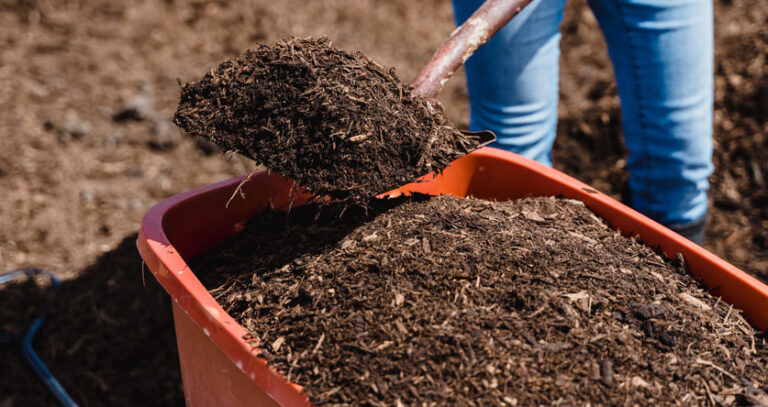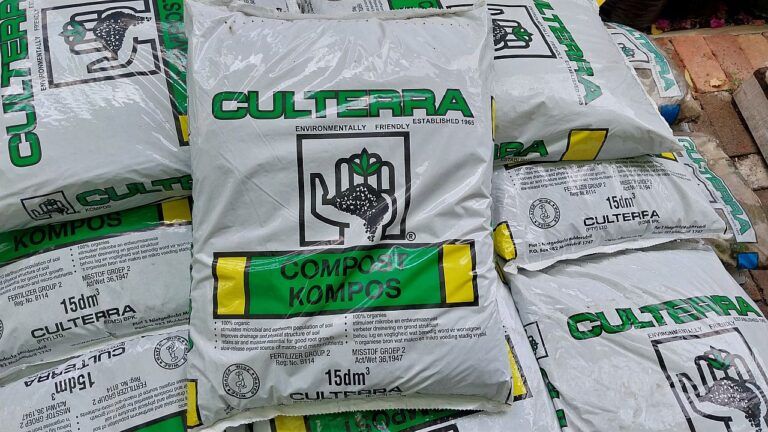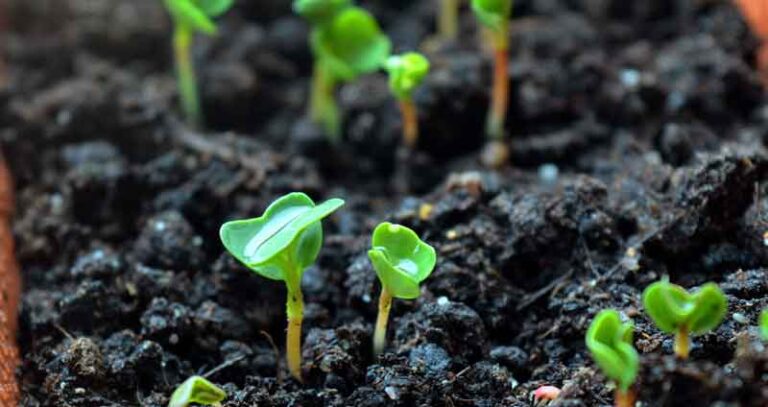Best Compost For Fruit Trees (Without a Doubt!)
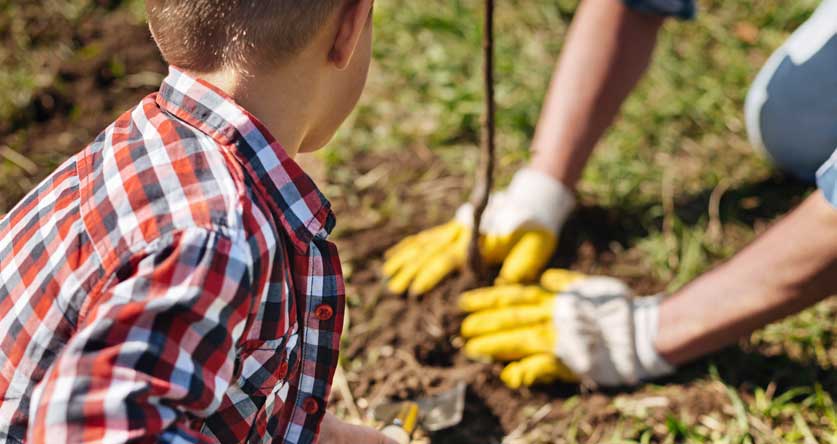
Taking care of fruit trees is slightly different from taking care of vegetables.
Fruit production is very demanding on the tree, using many available nutrients.
For this reason, many gardeners apply compost to fruit trees. It’s a great way to help boost your yield!
But when should you do this, and how much compost should you use?
Giving your fruit trees the right compost at the right time and with the best nutrient mix will reward you with abundant fruit!
What’s The Best Compost For Fruit Trees
The best compost for fruit trees during the regular growing season is standard well-matured compost. When buds appear on the trees, add well-aged chicken or cow manure to the compost mix to boost the nitrogen levels. After blooming, revert to ordinary compost.
Developing fruit is an expensive process for the fruit tree, demanding resources, macronutrients, and energy from the tree to produce healthy, big, and abundant fruit.
The nutrients used during fruit production need regularly replacing, so the tree stays robust.
Using the right mix of compost at the right time is essential to give your fruit trees the correct nutrients, promote health, and provide sufficient resources for an excellent fruit harvest.
Fruit trees require nitrogen-rich compost to assist them with growth and to help them fruit well.
Too much nitrogen released into the environment can potentially pollute water supplies and streams. For this reason, a slow-release nitrogen compost is the best (and most ecological) method to give the trees what they need.
Is Mushroom Compost Good For Fruit Trees?
Mushroom compost is generally good for most plants, but it is not a good option for all trees.
Mushroom compost is alkaline and will reduce the soil’s acidity. However, you should avoid using mushroom compost if you’re growing fruit trees such as apple and citrus trees that prefer acidic soil.
Suppose your soil is acidic, and you are planting trees that prefer a more neutral or alkaline growing medium. In that case, mushroom compost is an excellent addition to the compost under the tree.
For example, apricot trees, fig-trees, and some types of berries all like alkaline soil conditions.
How Much Compost Should I Give Fruit Trees?
Most fruit trees will benefit from 5 to 10-pounds of aged compost containing cow or chicken manure to boost nitrogen. Only add the manure to increase the nitrogen level when the trees are about to bloom.
During the rest of the growing season, standard compost can be added around the tree up to the drip line to ensure a constant supply of nutrients.
You can do this by creating a circular zone around the tree that extends up to the drip line, in other words, the vertical line from the ends of the branches to the ground below. If grass is growing under your tree, work it into the soil. Then apply ½ to 1 inch of compost. Work the compost into the top 2 inches of the ground up to the drip line.
When Is The Best Time To Put Compost Under Fruit Trees
While you can replenish compost around the tree at any time, the best time to put compost under your fruit trees is as the flower buds start to develop on the trees. For most types of fruiting trees, this will be in the spring.
As the trees begin to develop flowers, they require the most nutrients to boost fruit production. Unfortunately, once the tree is past the blossom stage, it is too late to add compost to increase the fruit yield.
Best Compost For Planting Fruit Trees
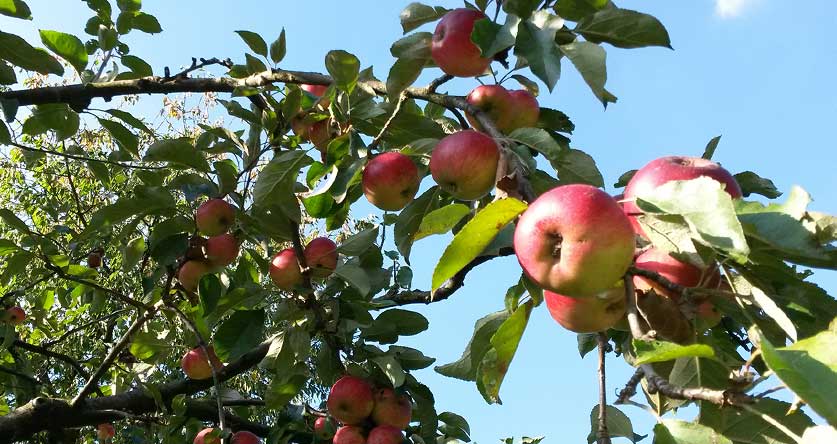
Planting new fruit trees is a vulnerable time for the tree, and you must give the tree the best environment to settle into its new home.
The main focus for a newly planted tree is root development to anchor the tree and for the roots to locate food and water.
Compost is an excellent method to provide the proper drainage level, air spaces in the soil, and a slow release of nutrients for the developing root structure. The best compost for this purpose is regular organic compost enriched with well-matured farm manure.
Before planting your tree, make a mixture of soil and compost with up to 20% compost. Use this mixture to plant the tree, remembering to position the tree’s base slightly higher than the surrounding ground level. This is because the ground will settle over time. Planting the root ball higher will ensure it doesn’t end up in a low ditch that could become waterlogged.
Best Compost For Dwarf Fruit Trees
Dwarf fruit trees are miniature versions of the full-size tree, developed for growing in containers.
Typical fruit trees do not do well when grown in pots or containers, but dwarf fruit trees perform perfectly in this environment. These dwarf varieties are grafted onto standard tree rootstock to give them a healthy root system and prevent the plant from growing too big above ground.
Dwarf fruit trees need the same nitrogen-rich compost as full-size trees. The dwarf trees may be small in stature, but they still produce a full fruit load in the correct season and need the same quality nutrients for fruit production.
Best Compost For Bare Root Fruit Trees
Bare root fruit trees are trees removed from the ground in their dormant season to be sold or transplanted.
When planted, these fruit trees need a proper settling-in period to establish their roots. In addition, they need good soil with well-matured standard compost to provide a loose soil mix to allow the rood to bed in.
It’s unnecessary to add nitrogen-rich elements to the soil at this stage since the tree does not need it, and you risk burning the roots during their settling-in phase.
Once the trees have been in the ground for a year or more, preferably in their second year, you can consider adding nitrogen-rich compost around the trees.
Best Compost For Fruit Trees In Pots
Potting soil is the best medium for fruit trees growing in pots. Still, you should use premium potting soil and add additional components such as blood and bone mix annually for an extra boost.
Then apply compost on the top of the soil as a mulch and a top-down feeder for the tree. The same compost principles for a tree in the ground apply to a tree in a pot. Apply standard compost through most of the growing season. As you see buds on the tree, use compost with added well-aged chicken or cow manure to raise the nitrogen content.





